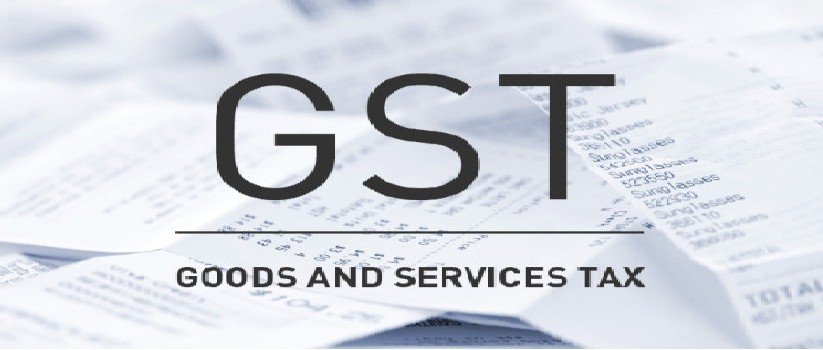
Everything you need to know about construction loans
by Grant Davidson | June 25, 2021
Introduction
How do Construction Loans work?
Types of Construction Loan
Exiting a Construction Loan
Risks of a Construction Loan
How to qualify for a Construction Loan
Financial Feasibility of a Project
Construction Loan Rates
Risks of a Construction Loan
GST in Construction Loans
Where to get a Construction Loan
How to choose the right Construction Loan provider
The Wefund Construction Loan Application Process
Introduction
In this extended article we’re going to provide a walkthrough of construction loans and explain everything you need to know. We’ll also highlight the risks related to the process and how these can be safely navigated and best mitigated. Whether you're an aspiring property developer looking at your first project, or a seasoned professional, there will be some sections of this article you may find interesting and which may expand on your knowledge.
At Wefund we do more than provide access to funding. Our in-depth knowledge of the development process allows us to support our clients and their projects from inception to delivery. As an experienced team of professionals, we have collectively funded over $1 billion worth of construction loans throughout our careers.
Construction loans can be daunting if you’re unfamiliar with the process. In the following sections we’ll cover the fundamentals of construction loans and break the process down.
If you’d like to discuss a project you’re considering, get in touch to see how we can help.

How do Construction Loans work?
A construction loan is funding that is provided to build a new building or structure, to service land, or carry out extensive renovations. A construction loan can cover a portion of the purchase cost of the land or property, or provide a refinance if the land/property has already been settled. It can also cover labour, materials, and most other related project costs.
One cost that can sometimes surprise new borrowers is the treatment of GST. Typically, GST is not funded by the construction facility and instead the cashflow is met by the developer and reclaimed quarterly.
A construction loan typically ranges in term from six months for a small subdivision, up to 24 months for a large construction project. The term is determined by the construction period, plus 3-6 months to allow for settlement of sales and the funds to flow back to the lender.
The specific function of a construction loan is to provide funding that covers the highest risk part of a development, getting the building off the ground. Once the building is complete, the risks associated with the asset are significantly lower. This is why the cost of construction loans are a margin above traditional mortgage loans.
There are several ways that a construction loan can be structured, with the key differences based around who the funds are provided to, and how the loan principal and interest payments are repaid.
Construction loans are typically paid to the borrower or main contractor based on a drawdown schedule. In advance of construction beginning the developer provides the lender with the expected monthly project costs and the total cost to complete the project.
The lender will verify this with their own approved and certified Quantity Surveyor (QS) and this will provide the expected monthly costs for the duration of the project. Once construction is underway, funds will be released every month based on actual delivery, which is verified and approved by the lender’s QS.
The flow of funds can either go from the lender to the developer (the borrower), or from the lender directly to the main contractor. If the project is a self-build project, the flow of capital is less of a consideration. However, when a 3rd party contractor is being appointed the lender will typically pay them directly rather than funding via the borrower.
The most common approach to dealing with interest payments during construction is to capitalise the interest into the loan amount. Under this structure, the lender calculates the interest costs that will be incurred based on the agreed drawdown profile. This amount is then withheld by the lender and included in the loan repayment amount at completion of the loan.
Interest can be paid monthly by the developer; however, this is usually not preferred as it can be advantageous to avoid unnecessary cash flow pressure during a construction project.

Types of Construction Loans
Construction projects vary in scale and duration, ranging from renovations of existing buildings which can take months, through to major new builds, which can take several years. There are typically two scenarios when considering a construction loan: short-term and long-term.
Short term
A short-term loan covers construction until a construction project is marketed and sold.
With short term construction loans, a lender offers a bridging loan that is shorter in duration than, for example, longer-term permanent finance like a mortgage. The loan bridges the project between construction and when it is refinanced on the market as a finished property.
This lets businesses transition from more expensive short-term loans for construction to long-term fixed-rate mortgages to free up liquidity in their property. Bridging loans also build credit and operating history for the project to help them secure good lending rates in the future.
This short-term bridging finance is also more likely to be granted to first-time developers and it requires fewer project details to assess risk. If the construction loan lender regards the risk as low, they should grant finance without too much scrutiny. This means it is generally limited to smaller projects that pose lower risks to lenders.
Long term
When a project reaches the point where it has reached market and value stability, a construction loan can be replaced by more attractive long-term lending, which frees up cash flow.
Short-term bridging loans are not really suitable for larger loans, which require tailored financial products specific to a particular building project. This type of longer-term finance is more complex and nuanced, and it usually facilitates lower borrowing rates, higher project values, and longer construction durations.
These loans are usually provided in pre-determined sums that are released as milestones are reached, for example, when foundations are laid, walls and roofs are complete, and electricity and water are installed.

Exiting a Construction Loan
Once construction is complete the borrower must repay and exit the construction facility. There are two ways to do this:
- Repay the loan with sales income
- Refinance the loan with another facility
If the project being funded is intended for sale, then the sales income is used to pay back the construction loan. To de-risk the exit, a lender may want to see a number of pre-sales to show market acceptance of the asset. This requirement can be high when dealing with the major banks, who often require up to 100% debt cover required to begin lending.
In the non-bank space, this requirement is much more variable and is often not a requirement if the asset and project financials are strong. Not requiring pre-sales is beneficial as it allows projects to start sooner, and some projects benefit from starting their sales campaign once construction has begun. This strategy can create greater demand, as once construction can physically be seen as started potential buyers have more certainty about the delivery date of the asset.
Regardless of the repayment strategy, the lender and borrower will agree to a loan term that covers the construction period and time to settle and complete sales (or arrange alternative finance). On average, 3-6 months is allowed, depending on the size of the development.
When buyers complete the purchase of their property and transfer funds, these are paid to the lender until the loan is repaid. If sales are below expectations and the borrower does not have the funds to repay the loan, there are alternative solutions to manage risk. We’ll cover this scenario below.
Post-construction, the development is much less risky, which means there are cheaper finance options to hold debt after construction is complete. The choice to refinance can be agreed at the outset if the developer is seeking to hold the asset. Under this structure the lender will confirm the project's metrics post completion to ensure there is a clear exit strategy.
If the intention is to hold and lease the asset, the key metric the lender will evaluate is the interest cover ratio (ICR). The ICR is a measure of how many times the income from the asset can cover the relevant interest payments. For example, a debt of $5m at a rate of 5% has an annual interest charge of $250,000. If the rental income from the asset was $500,000 then the ICR is 2 ($500k/$250k).
This number is key, as it highlights how much of a fall in operational income could be absorbed before the interest payment becomes at risk of not being met. Lenders vary in their approach, but an ICR of >1.8 is regarded as high.
There is a third option, which is a blend of both approaches. This can be through design - the developer wants to keep control of a proportion of the assets - or through necessity, if sales have been slower and/or lower than forecast. In this scenario the option to refinance some of the stock with a residual loan facility acts as a safety net and offers an alternative exit option if the market has been negatively affected in some way.
On average, residual stock facilities are 2-3% cheaper than construction loans so can offer a better strategy for holding the debt for a longer term if required.

Risks of a Construction Loan
Ground-up construction is the most complex development type and, because of this, there are inherent risks involved. Below, we highlight a few of these risks and how they’re managed so borrowers can enter this space with greater knowledge and confidence. The takeaway message is that if a project is approached correctly from the outset the risks can be managed and mitigated.
The first risk is related to time. The development cycle can easily be upwards of four years, if you consider site purchase and settlement, completing the Development Application (DA) and other council certificates, completing construction, and then sales/letting/refinancing.
This extended time frame means that economic shocks could impact on the labour market, cost of materials and overall construction, rental value, or the capital value of the final asset.
To mitigate general market risks, developers should allow for sufficient profit margin and have a minimum 5% contingency funding built in to absorb any shocks. If there were significant market shocks (such as the COVID-19 pandemic) and there was a pressure on cash flow, there are other funding solutions that can be sought during construction, such as a 2nd mortgage or mezzanine funding.
Check out our blog on the capital stack to understand the types of finance and where they fit in the development lifecycle.
Another key risk is linked directly to the main contractor. The construction sector works on low margins to compete for jobs and – given the nature of construction and the risks involved – builders can get into financial difficulty if they overstretch themselves or over-compete by reducing profit margins.
To mitigate this risk, lenders will only lend to a licensed general contractor who can provide evidence of the quality of their previous work. In addition, the lender will review their financial position and track record to ensure they are financially robust. Achieving private funding without having a qualified builder on board will be much more difficult.
Underestimating the complexity of a project and undertaking a large project early in a development career can create a high-risk profile. Construction projects have lots of moving parts and if a developer doesn’t have the relevant breadth of experience and financial reserves, the project can stall if there are unexpected hurdles to overcome.
Due to this, lenders generally decide to only work with borrowers who have the appropriate experience and track record and can demonstrate they have the ability to deliver their project on time and budget.

How to qualify for a Construction Loan?
In a previous Wefund blog article we went into this topic in detail. However, here are the key points if you just want a quick refresh on this topic.
When considering your creditworthiness, consider these 5 C’s:
- Character
- Capital
- Capacity
- Conditions
- Collateral
Character
Imagine you have funds to loan and two people who you don’t know approach you and ask for a loan. What criteria would you use to determine which one to lend to?
As the lender, you’ll want to know their reputation in meeting their financial obligations. You’ll also want to understand if they have financial stability, including being able to weather any adverse market conditions. Additionally, it’s essential to know if they have suffered any financial hardship in the past or been caught up in any scandals that may demonstrate poor judgement or character.
Capacity
Capacity is how likely a company or individual is to be able to repay their debt through their income. It’s normal for lenders to ask a business borrower for financial statements like profit and loss and cash flow, and individual borrowers for proof of income to assess their likelihood of being able to repay existing and new borrowings. Lenders will also look for a good asset and liability position to see if a borrower has adequate equity for security, if required.
Capital
The third C is capital. A lender will want evidence that a borrower has the capital to complete the proposed project. With property development, this will be the difference between the total project costs and the value of the loan requested (minus the cost of the finance itself). For example, if you are carrying out a project with development costs of $4m and are seeking $3.25m of funding ($3m loan plus $250k costs) the lender will need you to show you have the $1m ($4m - loan principal amount) in equity to complete the project.
Conditions
Conditions relate to the benchmarks that must be met by the borrower based on the lender’s operating practice. Examples are:
- Will the borrower be able to maintain an acceptable interest cover ratio?
- Is the borrower likely to borrow money from other lenders during the life of the loan and therefore become a higher risk customer?
- How much capital is the borrower contributing?
- Where and in what condition is the asset that is being used to secure the loan?
If a borrower isn’t able to meet the lender’s standard conditions, then they won’t be offered credit.
Collateral
The 5th and final C is Collateral. Collateral is the asset against which a loan is secured. Worst-case scenario, this is something the lender can possess if you don’t pay back your loan. The better the collateral, the better the chances of obtaining credit, with the best terms.
Some considerations that can demonstrate solid collateral are:
- The location and condition of the land or commercial real estate a developer is purchasing
- The value of the asset vs the local market
- Any resale limitations of the property.
When you consider applying for credit, consider the 5 Cs to determine if your company is likely to receive credit or not.

Financial Feasibility of a Project
Feasibility studies are assessments undertaken in the very early stages of a project. The larger and more complex the project, the greater the need for a comprehensive feasibility to understand the project in detail and highlight risks early.
The objective of a feasibility study is to detail and outline key project metrics that highlight if the project is viable or not.
Larger projects will have more components included in a feasibility assessment, such as a planning review, likelihood of an Environmental Impact Assessment, as well as broader site appraisals such as assessment of contamination, geotechnical studies, easements and restrictive covenants, and the availability of services, to name a few.
At the very minimum a lender will need to review:
Plans
Detailed plans of the new asset. These plans will need to be professionally drawn up and to scale. They will also need to include the materials that will be used and details on every element of the build, e.g. the size of rooms, the height of ceilings, and how the home will be insulated.
Valuation
An evaluation of what the asset will be worth once complete. While it isn’t easy to predict the future and say precisely how much a new build project will be worth, a valuer can give a good idea based on the plans and a comparable analysis of the local property market.
Equity
This is how much money a borrower can contribute towards the construction costs. As outlined in the section above relating to capital, lenders will need to see some level of equity investment from the borrower. Typically, this will range from 20% to 30% of the project costs.
Financial Model
The lender will also need to be able to review a financial model that breaks the project down into revenue and cost items. The feasibility should include the following cost items and detail the expected developer profit:
Project Revenue
Gross realisation/income
Sales & marketing & commission
Net realisation
Project Costs
Land purchase price
Land transaction costs
Construction cost
Professional and PM fees
Statutory fees and contributions
Project contingency (minimum 5% of Construction Costs)
Land holding costs
Marketing, pre-sales commission, and legals.
In addition to itemising the costs above, the project feasibility needs to cashflow the project and calculate the expected financing costs. Some developers don’t have the financial background or want to spend time developing a financial model.
This is where Wefund can help. We have analysts that can support borrowers and bring together the necessary details for a lender.
In addition, Wefund is currently developing a Feasibility Tool that will allow anyone using the Wefund Platform to create a financial feasibility quickly and easily. This tool will remove the need to use models set up in Excel spreadsheets and offer a solution to those who would like a tool where they can ‘stress test’ their project, run sensitivity analysis and try out different funding rates.

Construction Loan Rates
There are a number of factors that influence the rate that a lender is willing to loan to a borrower against a given project. In the eyes of the lenders there are two distinct risks. The first risk is related to the borrower and considers the likelihood of them incurring financial hardship.
The borrower’s insolvency risks are managed by meeting the 5C’s outlined in the section above. Lenders will ensure that the borrower is in a stable financial position, has enough equity in assets to provide collateral if required, and has a good financial record and credit score.
The second risk area is the project itself. Here, lenders will consider the location of the asset, type of asset, what the development margin is, and how the asset sits within its local market, as well as wider economic demand drivers.
Based on a balance between the quality of the borrower and the project, the lender will offer pricing that matches that risk profile. As a guide, rates in the market are currently approximately:
Prime Residential Metro Development: From 6% plus establishment costs
Sub-Prime/Regional Construction: From 9% plus establishment cost.

GST in Construction Loans
How GST is applied to a transaction and who is responsible to cashflow it throughout the development cycle can catch inexperienced developers by surprise. One common pitfall is not realising the developer/borrower is responsible for paying GST during construction. This can pose a cash flow issue if not accounted for. The borrower can claim it back but usually they are liable to meet that cost, unless specifically arranged with the lender.
Another common mistake is simply not structuring the project in the most efficient way from the outset. For example, the margin scheme can be applied under certain conditions and can be beneficial to the borrower. We offer a brief summary of the margin scheme below but note that Wefund are not tax advisers and that you should seek advice from your accountant on GST matters.
The margin scheme is a way of working out the GST due when selling an asset. Usually GST on a property sale is one 11th of the total sale price. However, under the margin scheme, the GST is calculated at one 11th of the margin (or an easy way to think of this is on the value created):
[Asset Sale Price less Land Purchase Price = the Margin/taxable amount under the margin scheme]
If you are selling an asset under the margin scheme, you must obtain written agreement from the purchaser in advance of the settlement date. If they are purchasing a property when the margin scheme is applied, the buyer cannot claim a GST credit for the GST included in the purchase price.
If you were charged the full rate of GST when you originally purchased a property, the margin scheme can't be used when selling the property. This is because generally, if you were charged the full rate of GST when you purchased a property as part of your business, you would have claimed the GST back.
Due to the complexity of the treatment of GST it’s advisable to maintain detailed records to ensure you are maintaining your obligations. As a minimum we recommend maintaining these records:
- Accounting records
- Valuation method and reports
- Evidence of how you calculated and applied the margin scheme
- Transaction evidence showing the agreement with the purchaser to use the margin scheme
- Evidence of the original purchase conditions.

Where to get a Construction Loan
The non-bank finance sector can be a difficult market to negotiate, as it can lack transparency and integrity. Our experienced team has seen it all: hidden fees, exhaustive application processes, lenders with no funds, and offers being amended at the last minute leaving borrowers at the mercy of the lender.
We’ve spent years finding the best finance solutions for our clients and, while doing so, we have developed a way to streamline the lending process using technology for faster, more reliable, and more secure funding.
Transparency is important for us – we want to provide financing options that show borrowers their true funding costs up front. We also want to provide funding certainty for borrowers, by offering a source of accredited lenders to work with.
Wefund was born to provide borrowers with fast, transparent, and secure funding for any property transaction.
If you’re a property developer seeking funds to settle on your development site or get your building project off the ground, Wefund are here to help. Our property development expertise and our custom proprietary finance platform give you access to fast and transparent non-bank construction finance.
Property is an ever-evolving market. As any developer knows, rapidly changing market conditions can have a dramatic effect on project profitability. So, it makes smart business sense to work with a financier who has the expertise and processes to connect you with the very best accredited non-bank lenders in the country.
Wefund’s panel of over 72 lenders covers all facets of construction funding, ranging from the traditional 70% – 80% of cost funding through to highly leveraged structured finance loans and equity placements. We offer construction loans from $1 million to $200 million.
We’ve reinvented the way developers obtain construction finance. Our platform streamlines the lending process using the newest technology for quicker, more reliable, and secure construction funding. The process is based on a proven structure used by Australia’s best commercial brokers.
From straightforward ‘walk-up’ residential projects to multimillion-dollar office and retail developments, Wefund’s panel of Australian’s best non-bank lenders are constantly seeking to invest in sound commercial, industrial, retail, and residential construction projects.
Our strong portfolio of construction and development loan products, combined with our expert construction finance team, means that Wefund can help you add hundreds of thousands of dollars to your project’s bottom line. Who would say no to that?

How to choose the right Construction Loan provider
According to Australia’s Victoria University, Australia is the 7th easiest country in the world to start up a business. Based on World Bank regulatory indicators, it could take as little as two days to get a business up and running in this country.
While this is good news for entrepreneurs and those who spot a gap in the market and need to move quickly, it’s not always a great outcome for customers. This is because it opens the door for unscrupulous ‘fly by nighters’ to set up shop and take advantage of unsuspecting or desperate Australian consumers.
The Australian Securities and Investments Commission (ASIC) is our national corporate watchdog, set up to regulate company and financial services and enforce laws to protect Australian consumers, investors, and creditors. However, stories are all too common of unscrupulous or negligent operators causing local businesses or consumers severe financial harm.
With so many lenders in the market, it can be confusing and intimidating trying to work out how to find a reputable construction loan provider. Because it’s easy to hide behind a sleek office façade or well-designed website, it’s difficult to evaluate how each type of lender operates and what they fund.
When deadlines are tight – a frequent occurrence in the property development world – the last thing you want to be doing at crunch time is having to make a rushed decision with incomplete information about your choices.
Selecting the right type of loan for your development can be a lot to get your head around. However, choosing the right lender can save you time, money and frustration and potentially help you avoid making an expensive mistake.
Wefund has written a detailed article on this topic, but here is a summary of the key points about the various types of lenders and how they operate:
Traditional lenders
Lenders in this category include the major banks, such as ANZ, Commonwealth, NAB and Westpac. Most offer a range of commercial property loan products and usually have qualified bankers for consultation.
These banks can usually offer good rates on more traditional commercial investments, like a warehouse or office. However, these traditional lenders are risk averse and will usually only offer a 65% Loan-to-Value Ratio (LVR). They also have more restrictive conditions because of higher capital ratios and tighter lending standards.
Institutional lenders
This category of lender usually includes superfunds and investment banks. They invest a large portion of their funds in corporate, government, and municipal debt securities, although they do participate in mortgage loan pools and offer investment loans suitable for construction.
Smaller banks and building societies
These lenders offer commercial lending for property developments. They may provide better funding conditions than traditional banks and with a higher LVR – but this usually means higher rates and fees. However, these lenders have more leeway and flexibility with loan approvals; for example, in what they consider as a reliable income source.
Real estate syndicates
Real estate syndicates have been popular in Australia for years as a way for investors to build their portfolio. A group of people come together and pool their money to form a syndicate. They generally target their investments in commercial, retail, or industrial properties.
They work according to prescribed investment parameters, so those seeking a construction loan will need to fall in their ‘sweet spot’ to be eligible for funding.
Speciality lenders
These lenders have a higher risk appetite and may operate right across the capital stack. Consequently, they are more likely to consider lending to developers who fail to meet the traditional banks’ credit policies. A construction loan from a speciality lender usually comes at a price though. Because the risks are greater, they will want a better return by asking higher rates.
Private lenders
These lenders are usually syndicates made up of investors or wealthy individuals. They are more suited to short-term (3-6 month) lending and usually ask higher setup and ongoing costs compared with the big banks. Their lending criteria is less rigid though and they’re more flexible and customer orientated, with quicker lending decisions and turnaround times.
You can expect quicker approvals and customised lending and repayment terms if you get a construction loan from a private lender. However, you can expect to pay higher interest rates.
Wefund helps you navigate your way through the sometimes overwhelming world of construction loans by offering property developers access to a trusted pool of Australia’s specialist non-bank lenders. They comprise a mix of reputable non-bank lenders that are reliable and experienced. Please note that we exclude private lenders.

The Wefund Construction Loan Application Process
Our cutting-edge platform connects borrowers to finance for commercial real estate development at competitive terms and rates. We match lenders with borrowers directly, or through brokers, using our smart non-bank finance platform.
This is the process for our fast, transparent commercial non-bank funding:
STEP 1
Register and submit an application
Borrowers or Introducers register to gain access to the Wefund platform, usually within 24 hours. They then can submit a loan application through the platform.
STEP 2
Application is assessed
Borrowers’ and Introducers’ applications are quickly reviewed by the team at Wefund. Once endorsed, accredited lenders are notified with details of the loan application.
STEP 3
Lenders review applications
Lenders then review applications and submit a term sheet via the Wefund platform to bid on deals.
STEP 4
Borrowers and Introducers review offers
Borrowers and Introducers receive a transparent summary of all indicative offers outlining all fees, interest rates, and conditions of the funding so that the borrower can make an informed decision.
STEP 5
Formal offer
Borrowers accept the indicative offer and Wefund submits the application through the platform for formal review and approval with the lender.
STEP 6
Funds Received
Wefund manages your transaction from approval to settlement to ensure you receive your funds on time.
RECEIVE UPDATES

Have a loan scenario?
Find out how wefund can help you with fast, transparent non-bank property and development finance. Provide your scenario details below and we’ll get back to you right away.
© 2025. All rights reserved.




